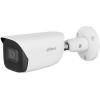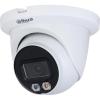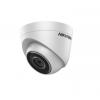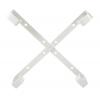-
€
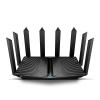

Il TP-Link Archer AX95 è un router wireless che supporta lo standard Wi-Fi 6. Può trasmettere reti wireless nelle bande da 2,4 e 5 GHz contemporaneamente, con due trasmissioni effettuate nella banda da 5 GHz. Il dispositivo utilizza i protocolli IEEE b/g/n/ax a 2,4 GHz e IEEE 802.11 a/n/ac/ax a 5 GHz. Il throughput massimo teorico è di 574 Mbps a 2,4 GHz, 4804 Mbps a 5 GHz (banda 1) e 2402 Mbps a 5 GHz (banda 2). Il router dispone di 1 porta Ethernet 2.5G, che può funzionarw da WAN o LAN, e di 4 porte Gigabit Ethernet, di cui 1 WAN o LAN e 3 LAN. L'uso della porta Ethernet 2,5G consente di collegare una rete esterna ad alta larghezza di banda (fino a 2,5Gbps) o di collegare un dispositivo esigente all'interno della rete domestica, come un server NAS. Le due trasmissioni nella banda da 5 GHz e l'uso di 4x4 MIMO fanno sì che l'Archer AX95 si distingua per un throughput molto elevato rispetto ad altri dispositivi che utilizzano il Wi-Fi 6.

Rete wireless Wi-Fi 6 AX7800
Il router supporta lo standard Wi-Fi 6 e può trasmettere una rete wireless nelle bande da 2,4 e 5 GHz contemporaneamente. Trasporta 2 trasmissioni in 5 GHz, quindi offre velocità molto più elevate rispetto alle soluzioni concorrenti. Utilizza i protocolli IEEE 802.11 b/g/n/ax a 2,4 GHz e IEEE 802.11 a/n/ac/ax a 5 GHz. La velocità massima teorica è di 574 Mbps a 2,4 GHz, 4804 Mbps a 5 GHz (banda 1) e 2402 Mbps a 5 GHz (banda 2). Il dispositivo si distingue per la sua velocità rispetto ad altri router Wi-Fi 6 ed è una buona soluzione per gli utenti molto esigenti che vogliono godere di alte velocità wireless..

1 porta Ethernet 2,5G, 4 porte Ethernet gigabit
L'Archer AX95 dispone di 1 porta Ethernet 2,5G (2,5Gbps), che può essere utilizzata come WAN o LAN. A seconda delle esigenze, è possibile utilizzarla per collegare un segnale dell'operatore o un dispositivo all'interno della rete locale che richiede una larghezza di banda elevata (ad esempio un server NAS). Inoltre, il router dispone di 4 porte Gigabit Ethernet (10/100/1000 Mb.s), di cui 3 porte LAN e 1 porta WAN/LAN.

Processore efficiente
Il design del router si basa su un processore quad-core Broadcom con clock a 1,7 GHz. Inoltre, il dispositivo dispone di 512 MB di RAM. Il potente processore garantisce un funzionamento fluido anche in condizioni di carico elevato e riduce al minimo i ritardi di trasmissione.
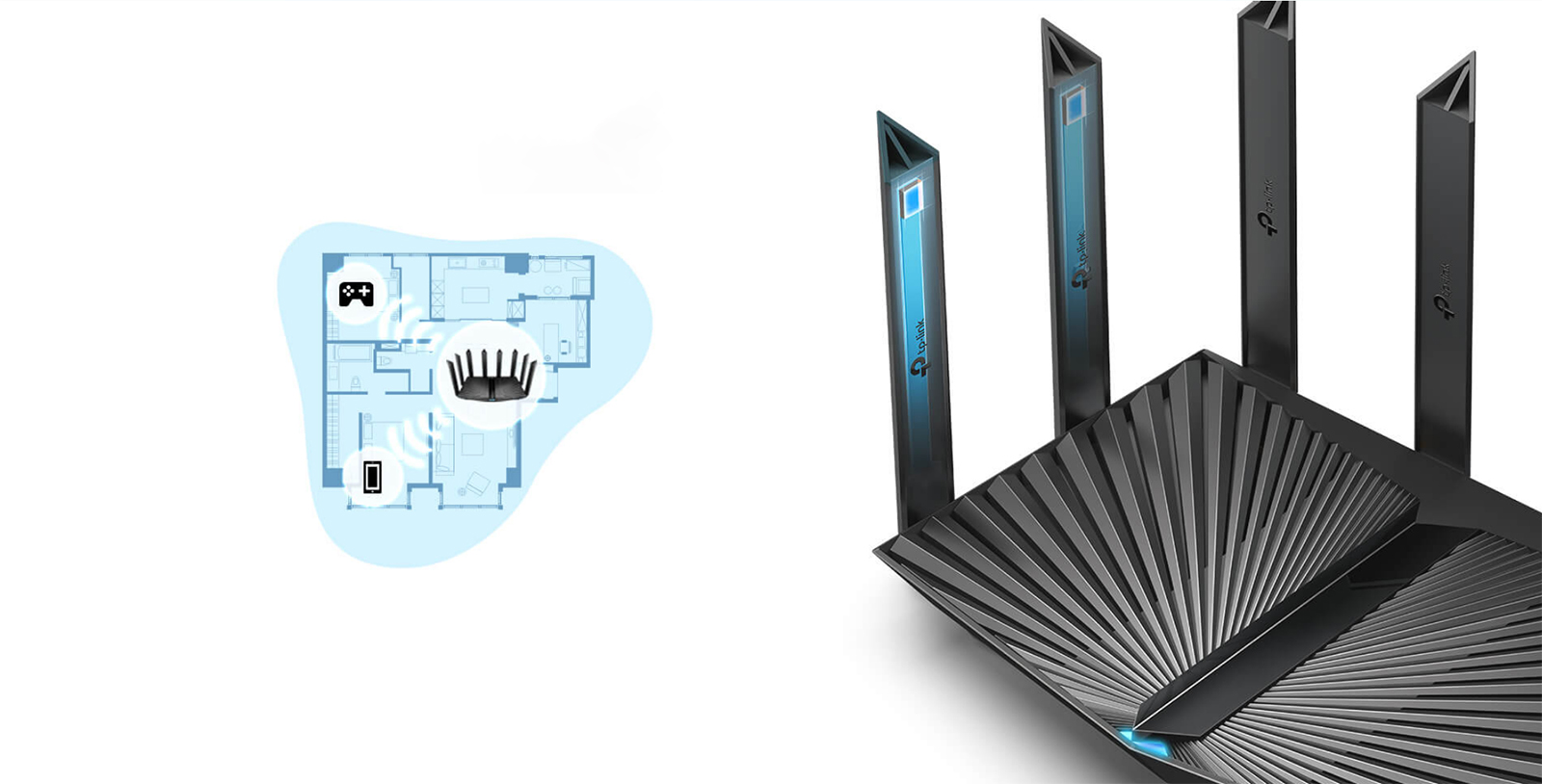
Grande portata di trasmissione
La trasmissione wireless è garantita da 8 antenne omnidirezionali esterne integrate nella struttura. Offrono una buona copertura del segnale, anche in posizioni difficili. Il produttore ha utilizzato un amplificatore ad alta potenza, che migliora la penetrazione degli ostacoli e aumenta la portata. Un ulteriore vantaggio è la funzione di Beamforming - formazione del fascio. Se l'utente si trova al limite della portata, il fascio viene formato in modo da fornire il miglior segnale possibile

Molti utenti contemporaneamente
L'Archer AX95 è ideale per reti a cui sono collegati molti clienti wireless. Il protocollo OFDMA consente a più utenti di utilizzare un singolo flusso contemporaneamente, aumentando così l'efficienza complessiva della rete. La tecnologia MU-MIMO permette la trasmissione e la ricezione simultanea di dati da più clienti, prevenendo il fenomeno della coda di trasmissione e migliorando la larghezza di banda e la latenza.
In alcune case, molti dispositivi utilizzano la rete wireless. Oltre a computer, console e telefoni, ci sono anche televisori e dispositivi smart di ogni tipo. L'Archer AX95 garantirà un funzionamento stabile della rete anche con un gran numero di dispositivi collegati.
.
TP-Link OneMesh
Il prodotto offerto è compatibile con lo standard TP-Link OneMesh. Insieme ad altri dispositivi che supportano questo standard, può creare un'unica rete wireless unificata. In alcune località, l'utilizzo di più di un router o punto di accesso è necessario per coprire l'intero spazio. All'interno della rete OneMesh, i dispositivi comunicano tra loro in modalità wireless, senza bisogno di cavi Ethernet aggiuntivi. L'utente, spostandosi da un dispositivo all'altro, viene automaticamente commutato senza perdite di segnale. La rete è visibile con un unico nome e il software decide a quale trasmissione sei attualmente collegato per semplificare al massimo l'utilizzo di Internet.

Sicurezza

Scansione della rete domestica
La rete domestica viene continuamente scansionata alla ricerca di attacchi e problemi di sicurezza. Un'adeguata rilevazione precoce delle vulnerabilità può proteggere la rete da potenziali attacchi.
Parental control
La funzione di controllo genitori consente di creare profili utente e controllare il loro accesso alla rete. Puoi anche filtrare contenuti inappropriati, bloccare siti web e visualizzare le statistiche del tempo trascorso online.


Funzuione QoS
Grazie alla funzione QoS (Quality of Service), puoi dare priorità alla trasmissione dei dati per determinati dispositivi, assicurandoti che il loro collegamento sia il più importante. Ad esempio, se stai lavorando, puoi assegnare al tuo computer la massima priorità, in modo da non avere mai problemi di larghezza di banda, indipendentemente da ciò che fanno gli altri utenti.
Client e server VPN
Il dispositivo consente di creare un server VPN utilizzando gli standard OpenVPN, PPTP o L2TP. La connessione crittografata garantisce l'accesso sicuro alla rete locale dall'esterno. Il router può anche funzionare come client VPN se si desidera connettersi a un'altra rete in remoto.

Porta USB 3.0
Sul lato del case è presente una porta USB 3.0, perfetta se si desidera creare un file server. Il dispositivo supporta server FTP, media server e server Samba. Supporta anche Apple Time Machine.
La porta USB 3.0 offre un throughput superiore rispetto alla 2.0, spesso utilizzata nei router. Questo è molto importante se si utilizza un'unità esterna, in quanto consente di ottenere velocità di lettura e scrittura più elevate.
.


Parental control
Dall'interno dell'app è possibile accedere rapidamente alle impostazioni del controllo parentale. È possibile modificare le impostazioni al volo e controllare le statistiche sul tempo trascorso online.
Notifiche di nuove chiamate
È possibile ricevere notifiche di nuove connessioni alla rete e bloccarle facilmente con un solo clic, se necessario.


Aggiornamento rapido
È possibile aggiornare il software dal pannello di gestione o dall'app. Bastano pochi clic per avviare il processo. In alternativa, è possibile utilizzare l'opzione di aggiornamento automatico.
Specifiche
| TP-Link Archer AX95 | |
| Proprieta' wireless | |
|---|---|
| Standard |
Wi-Fi 6
2,4 GHz: IEEE 802.11 b/g/n/ax 5 GHz: IEEE 802.11 a/n/ac/ax |
| Velocità massima teorica |
2,4 GHz: 574 Mb/s (802.11ax) 5 GHz-1: 4804 Mb/s (802.11ax, HE160) 5 GHz-2: 2402 Mb/s (802.11ax) |
| Copertura Wi-Fi |
8 potenti antenne integrate nel dispositivo. Le antenne forniscono una potenza sufficiente per potenziare il segnale di rete e coprire un'ampia area
Beamforming Direzionare il segnale di rete verso il client consente di aumentare la copertura Wi-Fi
Amplificatore ad alta potenza Migliora la potenza di trasmissione per migliorare la portata del segnale
4T4R Molti flussi all'interno di una singola banda ne migliorano la resistenza alle interferenze dei dati |
| Prestazioni sieci Wi-Fi |
Tre bande Relocalizza i dispositivi tra le bande disponibili per ottenere prestazioni ottimali
MU-MIMO 4×4 Permette la comunicazione simultanea con più client abilitati
OFDMA Permette di comunicare con più client Wi-Fi 6
Airtime Fairness Migliora le prestazioni della rete riducendo l'uso inefficiente della larghezza di banda
DFS Permette di selezione dinamica della frequenza
8 flussi I dispositivi hanno a disposizione una larghezza di banda ancora maggiore |
| Modalita' di lavoro | Modalita' router Modalita' punto d'accesso |
| Sicurezza trasmissione | |
| Protezione |
Firewall SPI Associazione degli indirizzi IP e MAC ALG Protezione in tempo reale dei dispositivi IoT Blocco dei siti web dannosi Sistema di prevenzione delle intrusioni Prevenzione degli attacchi DDoS Scansione della rete domestica |
| Rete ospiti | Rete in ogni banda |
| Server VPN | OpenVPN PPTP L2TP |
| Client VPN | OpenVPN PPTP L2TP |
| Crittografia rete Wi-Fi | WPA WPA2 WPA3 WPA/WPA2-Enterprise (802.1x) |
| Caratteristiche hardware | |
| Processore | Processore quad-core con frequenza di 1,7 GHz |
| Porte Ethernet |
1x 2.5G Ethernet (2,5 Gb/s) WAN / LAN 1x Gigabit Ethernet (10/100/1000 Mb/s) WAN / LAN 3x Gigabit Ethernet (10/100/1000 Mb/s) LAN |
| Porte USB |
1 porta USB 3.0
Obsługiwane typy partycji:
|
| Pulsanti |
|
| Alimentazione | 12 V / 3.3 A |
| Proprieta' software | |
| Protocolli |
IPv4 IPv6 |
| OneMesh | Supporto OneMesh™ OneMesh™ aiuta a creare una rete flessibile che, insieme ai prodotti TP-Link OneMesh™, copre l'intera superficie della casa senza la necessità di sostituire i dispositivi esistenti o acquistare soluzioni completamente diverse per il sistema Wi-Fi. |
| Parental controll |
|
|
Modalità WAN: |
|
| Quality of Service | Priorita' QoS per dispositivi |
| Servizi Cloud |
DDNS |
|
Port Forwarding: |
|
| IPTV | IGMP Proxy IGMP Snooping Bridge VLAN taggato |
| DHCP |
|
| DDNS | TP-Link NO-IP DynDNS |
| Gestione |
Aplikacja Tether Web |
| Altre Proprieta' | |
|
Requisiti di Sistema: |
Internet Explorer 11+, Firefox 12.0+, Chrome 20.0+, Safari 4.0+ o altro browser con supporto JavaScript abilitato
Modem via cavo o DSL (se necessario)
|
| Temperatura di lavoro consentita | 0℃~40℃ (32℉ ~104℉) |
| Temperatura consentita di Stoccaggio | -40℃~70℃ (-40℉ ~158℉) |
| Umidita' consentita | 10%-90% senza condensa |
| Umidita' di stoccaggio consentita | 5%-90% senza condensa |
| Dati di test | |
| Potenza di Trasmissione Wi-Fi | ≤23dBm EIRP (5.17GHz~5.35GHz); ≤30dBm EIRP (5.47GHz~5.725GHz); ≤20dBm EIRP (2.4GHz) |
|
Sensibilità di Ricezione |
2.4 GHz:
5 GHz: |
|
Aspetto e Contenuto della Confezione: |
|
| Dimensionie (S×G×W) | 277.3 × 183.9 × 57.3 mm (10,9 × 7,2 × 2,3 cala) |
| Contenuto confezione | Router Wi-Fi Archer AX95 Alimentatore Cavo Ethernet RJ45 Guida rapida all'installazione |






 Polski
Polski English
English Italiano
Italiano Español
Español Čeština
Čeština Српски
Српски Deutsch
Deutsch Ελληνικά
Ελληνικά Slovenský
Slovenský

